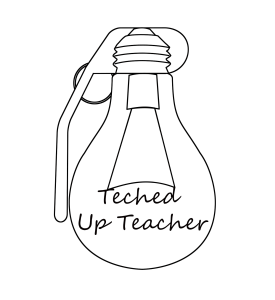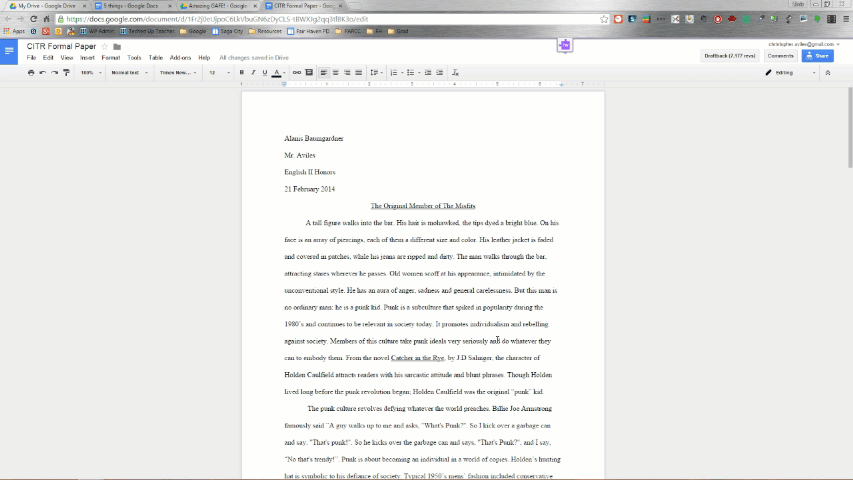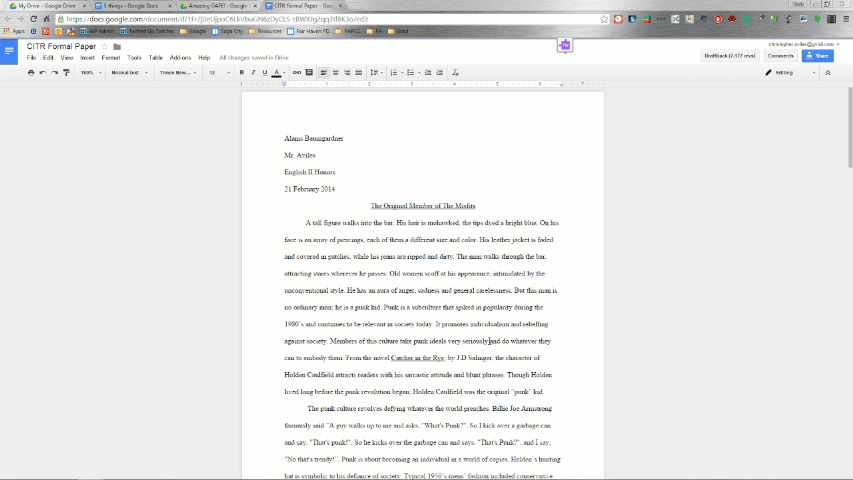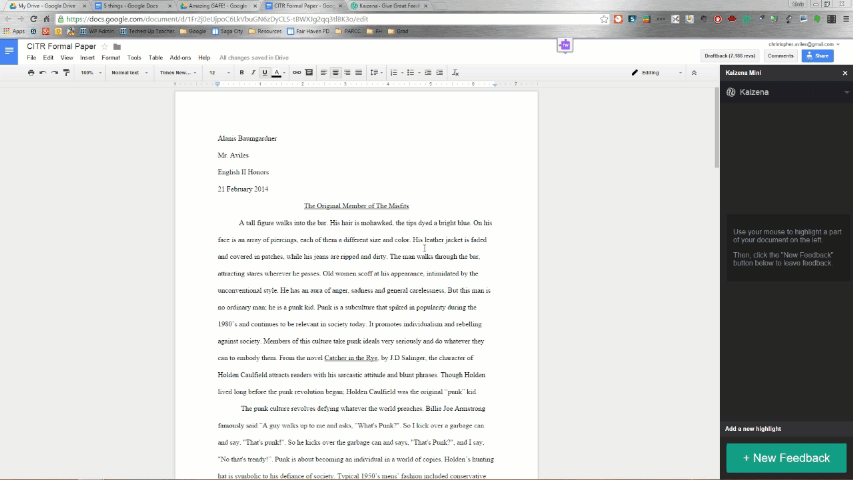Game-Changing Grading Changes

No one will argue that your classroom should be a positive place for students to learn. However, I feel that the way we grade and give feedback to students is often at odds with the positive classroom climate we desire. Below are some things I changed about the way I graded that made a positive difference in my classroom.
Plus vs. Minus – When I handed back work to a student, instead of putting -25 on their paper I put +75. +75 says they’re not all bad.
Return Papers at the End of Class – I don’t know about you, but I never had a kid get a poor grade on an assignment and thank me for the feedback it contained. Instead, I got a sad face or the stinkeye as they stuffed the paper away or crumpled it up. Worse, I found many of my students shut down for the day if I gave back an assignment they did poorly on in the beginning of class, so I decided I would hand back work at the end of the period. I found more of my struggling students were able to focus on the day’s learning rather than shut down over the poor grade this way. It also allowed me to call a student over for a quick one-on-one to talk since I had four minutes of passing time before the next class came in.
Grade the Product AND the Process – As a recovering English teacher, I constantly preached and teached the writing process. However, when we grade, it is difficult to grade the process; usually all we have is the finished product. Not anymore! If you use Google Apps for Education, we can grade the process, not just the product, by checking out the Revision History. Most GAFE products under the File menu have an option to See Revision History. If you have Editing rights, Revision History will let you see the time a student has spent working on an assignment as well as a snapshot of their work at certain points in time. By going back and looking at a Doc or Slides’ Revision History, especially through the Show More Detailed Revisions feature, we can get an idea of just how a student approached their work and where they might be struggling.

With Revision History, I’ve seen students work just two hours on a paper the night before it’s due and others spend considerable time and effort on a paper. Whatever the case may be, I can identify and address what I see in Revision History with a student to help them grow.
To get more bang for your buck, consider pairing Revision History with the amazing Draftback app that will allow you to play Revision History back in real time as if a student were writing the paper right before your eyes:

Use Kaizena for Effective Feedback – Many teachers have discovered the awesome benefits of filming themselves and their lessons, but what about recording feedback? We need to kick feedback into the 21st century. A red pen won’t get it done anymore because when a kid sees the red ink it doesn’t tell how them how much you care. Enter Kaizena as the best way to deliver effective feedback. Kaizena lets you show a kid how much you care by allowing you to leave audio feedback on Google Docs and Slides in a fast, friendly way.
Tools and ideas to transform education. Sign up below.

Kaizena made my classroom a more positive place to learn because my students could now hear the intonation and inflection in my voice when I delivered feedback, not have their hearts broken by red ink. They could hear the positivity with which I reviewed their work and provided feedback. They could hear how much I wanted them to be successful and many started to understand that criticism isn’t a bad thing; it’s given to help them grow. Now that my kids could hear me the positivity, I helped me build better relationships with them. What’s more, when a parent wanted to see how well their child did on a paper, they’d have to play the comments and they too would hear the positivity in my voice.
Rethinking How We Grade Group Work – To this day, I hate group work. It was always so frustrating. All the way through college I dealt with the moochers, slackers and control freaks who held my educational destiny in their often idle hands. On the flip side, I see the value in group work and think it’s important our students know how to collaborate effectively. I think it’s the grading of group work that often turns it into a negative experience. Only giving a group grade never sat right with me. How can we change group grading to make it a more positive experience?
I had students submit group contracts which clearly stated when and where they would meet and who was responsible for completing what, when. This contract was used in our post-project meetings. By having clearly defined tasks and roles, each student was held accountable. Make them be specific. Instead of Tina will do research by Friday get them as close to Tina will find five usable sources for the project and get them to Tom on the shared planning Doc by 3pm Friday.
Remember Revision History? It’s great for group projects because a Revision History is created for every person the Doc is shared with. Revision History can help a teacher see who contributed to group work and when because on any shared item in Google Drive, each individual is assigned their own color and timestamp. We can now better see how much each group member has contributed to an assignment. We can take this into consideration when grading, or, better yet, be proactive and intervene when a group’s shared planning Doc looks like one person is doing all the work.
I believe in giving some form of individual grade for group projects. My two favorite methods of generating individual grades also allow students to have agency in the grading process.
1) After a project, I gave students a Google Form where they could provide anonymous feedback on their peers efforts during the project. The Form also allowed students to grade these efforts using a rubric. I would then average the grades for each individual student and share the anonymous feedback at the post-group meetings. I would give them an opportunity to reflect on the feedback as a group and speak to the fairness of their averaged grade. Through this process we would come to an agreement on an individual grade for the project and a list of takeaways the could use to improve for next time.
A different and equally awesome way to come to an individual grade from a group project comes to us from my former Chemistry professor with special thanks to Mike Matera who reminded me about the method way back in 2012. Take the group grade, multiple it by the number of students in the group, and let them divy the points up how they see fit. So, if 5 kids get a 90 on the project that would be 450 points they can then assign to each other. Whether you use this method or the one above, I think you’ll be pleasantly surprised with not only students’ honesty and fairness, but just how much more positive group projects are seen in your class.
Finally, maybe one of the most positive changes we can make to our classroom is how we think about grading in general. I wish grades were thought more of as a “for now” type of thing rather than a permanent thing. Hence, why I’m such a big fan of Mastery learning and getting rid of traditional grading in general. I think that’s a bit far off from mainstream acceptance, so let me leave you with this:
I remember being told by many a teacher growing up that I had a 100 in their class and all I had to do was keep it. The problem was, as we all know, keeping the 100 wasn’t possible. We put students in a mindset that failure is the only option when we talk about grading like that. What if we approached it from the opposite direction. What if told students that they had a zero in our class and the only thing they could do is get better? I used this system, I call it XP grading, in my gamified classroom and it’s made a big difference.
Until Next Time,
GLHF
cross-posted at Teched Up Teacher
Chris Aviles presents on education topics including gamification, technology integration, BYOD, blended learning, and the flipped classroom. Read more at Teched Up Teacher.
Chris Aviles is a STEM teacher, edtech specialist, and president of Garden State Esports. He is also a regular contributor to Tech & Learning.
